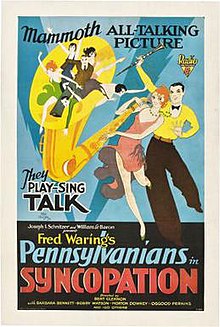
The Hollywood Revue of 1929, or simply The Hollywood Revue, is a 1929 American pre-Code musical comedy film released by Metro-Goldwyn-Mayer. It was the studio's second feature-length musical, and one of their earliest sound films. Produced by Harry Rapf and Irving Thalberg and directed by Charles Reisner, it features nearly all of MGM's stars in a two-hour revue that includes three segments in Technicolor. The masters of ceremonies are Conrad Nagel and Jack Benny.

The Broadway Melody, also known as The Broadway Melody of 1929, is a 1929 American pre-Code musical film and the first sound film to win an Academy Award for Best Picture. It was one of the early musicals to feature a Technicolor sequence, which sparked the trend of color being used in a flurry of musicals that would hit the screens in 1929–1930. Today, the Technicolor sequence survives only in black and white. The film was the first musical released by Metro-Goldwyn-Mayer and was Hollywood's first all-talking musical.

Ball of Fire is a 1941 American screwball comedy film directed by Howard Hawks and starring Gary Cooper and Barbara Stanwyck. The Samuel Goldwyn Productions film concerns a group of professors laboring to write an encyclopedia and their encounter with a nightclub performer who provides her own unique knowledge. The supporting cast includes Oscar Homolka, S. Z. Sakall, Henry Travers, Richard Haydn, Dana Andrews, and Dan Duryea.

Ethel Ruby Keeler was an American actress, dancer, and singer who was paired on-screen with Dick Powell in a string of successful early musicals at Warner Bros., particularly 42nd Street (1933). From 1928 to 1940, she was married to actor and singer Al Jolson. She retired from show business in the 1940s, but made a widely publicized comeback on Broadway in 1971.

Lew Brown was a lyricist for popular songs in the United States. During World War I and the Roaring Twenties, he wrote lyrics for several of the top Tin Pan Alley composers, especially Albert Von Tilzer. Brown was one third of a successful songwriting and music publishing team with Buddy DeSylva and Ray Henderson from 1925 until 1931. Brown also wrote or co-wrote many Broadway shows and Hollywood films. Among his most-popular songs are "Button Up Your Overcoat", "Don't Sit Under the Apple Tree", "Life Is Just a Bowl of Cherries", "That Old Feeling", and "The Birth of the Blues".
Harry Akst was an American songwriter, who started out his career as a pianist in vaudeville accompanying singers such as Nora Bayes, Frank Fay and Al Jolson.
Samuel Timberg was an American musician and composer for the stage, film studios, and television.

Showgirl in Hollywood is a 1930 American pre-Code all-talking musical film with Technicolor sequences, produced and distributed by First National Pictures, a subsidiary of Warner Bros. The film stars Alice White, Jack Mulhall and Blanche Sweet. It was adapted from the 1929 novel Hollywood Girl by J.P. McEvoy.
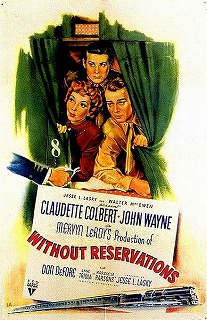
Without Reservations is a 1946 RKO Radio Pictures American comedy film directed by Mervyn LeRoy and starring Claudette Colbert, John Wayne and Don DeFore. The film was adapted by Andrew Solt from the novel Thanks, God! I'll Take It From Here by Jane Allen and Mae Livingston.
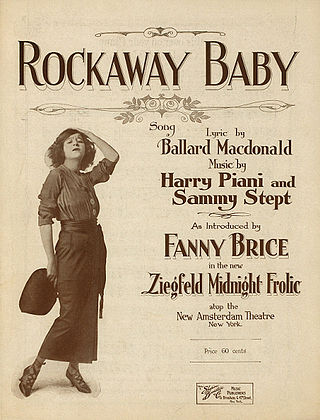
Samuel Howard Stept was an American songwriter who wrote for Broadway, Hollywood and the big bands. He became known simply as Sam Stept or Sam H. Stept – he rarely used his full middle name.

Street Girl is a 1929 pre-Code musical film directed by Wesley Ruggles and starring Betty Compson, John Harron and Jack Oakie. It was adapted by Jane Murfin from "The Viennese Charmer", a short story by William Carey Wonderly. While it was the first film made by RKO Radio Pictures, its opening was delayed until after Syncopation, making it RKO's second release. It was very successful at the box office, accounting for almost half of RKO's profits for the entire year.

The musical short can be traced back to the earliest days of sound films.

The Cuckoos is a 1930 American Pre-Code musical comedy film released by RKO Radio Pictures and partially filmed in two-strip Technicolor. Directed by Paul Sloane, the screenplay was adapted by Cyrus Wood from the 1926 Broadway musical The Ramblers by Guy Bolton, Bert Kalmar and Harry Ruby. The film stars Bert Wheeler and Robert Woolsey, and while they had appeared on Broadway and in other films together, this was their first time starring as a team. The success of this picture, combined with Rio Rita being their most successful film of 1929, convinced the studio to headline them as the comedy team Wheeler & Woolsey, through 1937.

New Faces of 1937 is a 1937 American musical film directed by Leigh Jason and starring Joe Penner, Milton Berle and Harriet Hilliard. Its plot is similar to The Producers (1968). Intended as the first film of an annual RKO Pictures revue series, poor reception ended plans for future productions.
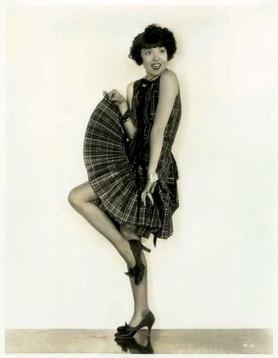
Smiling Irish Eyes (1929) is a Vitaphone American pre-Code musical film with Technicolor sequences. The film is now considered a lost film. However, the Vitaphone discs still exist.

Syncopation is a 1942 American film from RKO directed by William Dieterle and starring Adolphe Menjou, Jackie Cooper, and Bonita Granville. It is set during the early days of jazz. It is also known as The Band Played On.

Lita Chevret was an American actress who began her career at the genesis of sound films. She appeared in over 60 films between 1929 and 1940, although in most of those she had small or non-billed parts.
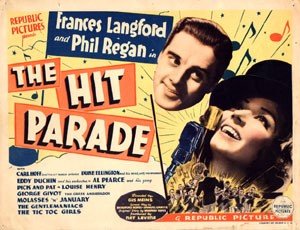
The Hit Parade is a 1937 American musical film directed by Gus Meins and written by Bradford Ropes, Samuel Ornitz and Harry Ruskin. The film stars Frances Langford, Phil Regan, Max Terhune, Edward Brophy, Louise Henry and Pert Kelton. The film was released on April 26, 1937, by Republic Pictures. Republic later reissued the film in 67 minute length as I'll Reach for a Star.
Prisoners is a 1929 American sound part-talkie film produced by Walter Morosco and directed by William Seiter for First National Pictures. In addition to sequences with audible dialogue or talking sequences, the film features a synchronized musical score and sound effects along with English intertitles. The sound was recorded via the Vitaphone sound-on-disc process. The screenplay was written by Forrest Halsey, based on the novel by Ferenc Molnar. Lee Garmes was the cinematographer.
"I'll Always Be In Love With You" is a 1929 popular song written by Herman Ruby, Bud Green, and Sam H. Stept for the film Syncopation. The song soon became a hit, with a recording in that year by Fred Waring and His Pennsylvanians charting for 8 weeks, peaking at No. 3. Another recording from that year by Morton Downey charted as well, reaching No. 9. The song has since been recorded many times by artists including Ella Fitzgerald, Benny Goodman, Count Basie, Helen Forrest, Fletcher Henderson, Dinah Shore, and Kay Starr.
